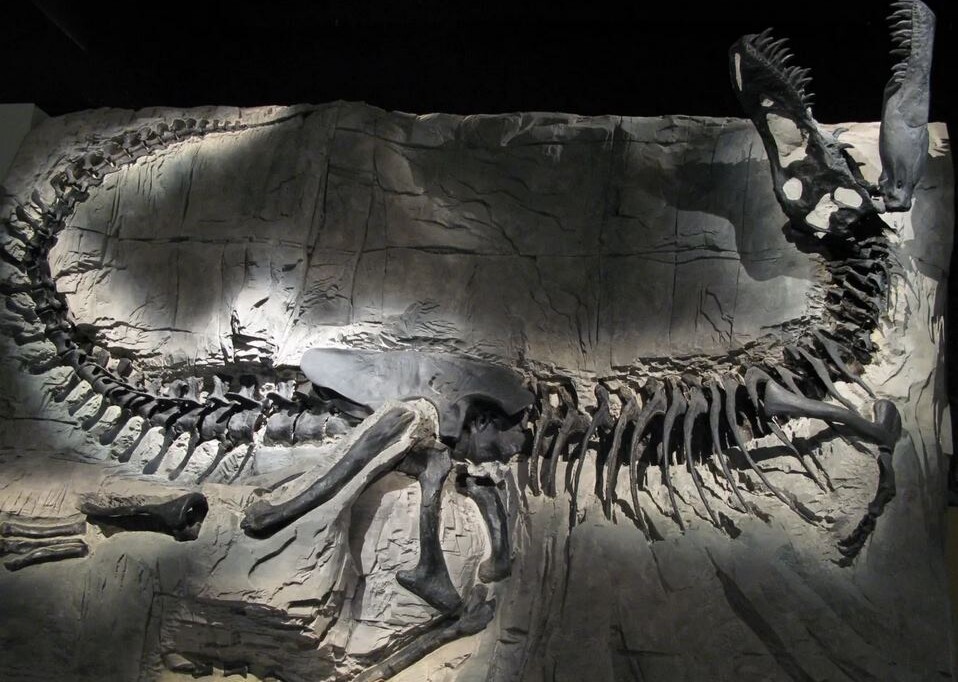Heroes
Double Dinosaur Discovery: Meet the Dragon Prince and Enigmacursor!

Quick Smiles:
- A long-forgotten fossil in a Mongolian museum drawer has been identified as a new species, the “Dragon Prince of Mongolia.”
- This discovery sheds light on the evolutionary journey of Tyrannosaurids between Asia and North America.
- Another dinosaur, once misidentified, is now recognized as Enigmacursor, highlighting advances in paleontology.
Paleontology is experiencing an exciting resurgence, with old fossils revealing new secrets. A prime example is the recent identification of the “Dragon Prince of Mongolia,” a small but significant member of the Tyrannosaurid family that had been misclassified for decades.
This intriguing fossil had been tucked away in the Mongolian Academy of Sciences since the 1970s, mistakenly labeled as an Alectrosaurus. It was only when Ph.D. student Jared Voris stumbled upon the two partially-complete skeletons that the error was discovered.
Professor Darla Zelenitsky, who led the study on this newfound species, believes that many more discoveries are waiting in museum collections.
“It is quite possible that discoveries like this are sitting in other museums that just have not been recognized,” she noted.
Named Khankhuuluu mongoliensis, or the Dragon Prince of Mongolia, this creature offers a glimpse into the early evolution of Tyrannosaurids. Unlike its giant relative, the T. rex, this species was more agile, weighing in at about the same as a show jumping horse.
Living 86 million years ago, K. mongoliensis occupied a unique niche, reflecting the ancient connectivity between North America and Eurasia.
Described by Professor Zelenitsky as “really messy,” the history of T. rex evolution was previously clouded by missing links between continents. The discovery of K. mongoliensis helps clarify this evolutionary path.
The Cretaceous period saw continents resembling the ones we know today, with a land bridge connecting Asia and North America. This bridge allowed early Tyrannosaurids to migrate and diversify, leading to the evolution of two distinct subgroups.
One subgroup, which included the massive Tarbosaurus bataar, remained in Asia, while another smaller group, with members like “Pinocchio rex,” evolved on both continents.
Eventually, one member of the larger group made its way back to North America, evolving into the iconic Tyrannosaurus rex by 66 million years ago.
In another fascinating turn, a fossil initially thought to be a Nanosaurus was recently reclassified. After extensive study, it was renamed Enigmacursor, a testament to the evolving nature of paleontological research.
Professor Susannah Maidment, who co-led the examination, remarked on the changes over the past 150 years:
“It just goes to show how much paleontology has changed in the past 150 years.”
The original Nanosaurus classification, dating back to 1877, was based on limited fossil evidence, which has since been outpaced by numerous discoveries of small dinosaurs worldwide.
“As a result, it made sense to put them to one side and name Enigmacursor as a new species instead,” Maidment explained.
Enigmacursor, known for its speed, lived on Late Jurassic floodplains and riverbanks, relying on its agility to survive. It was given the species name mollyborthwickae in honor of a benefactor whose donation facilitated its acquisition by the museum.
These discoveries underscore the dynamic nature of paleontology, where even long-overlooked fossils can rewrite history.

The enigmacursor skeleton being cleaned – credit, the Trustees of the London Natural History Museum, released.

-

 Cute Animals2 years ago
Cute Animals2 years agoPuppy Love Patrol: Service Dog Swoons Over K9 Officer Neighbor
-

 Cute Animals2 years ago
Cute Animals2 years agoHugs, Hooves, and Happiness: Newborn Donkey Steals Hearts by Demanding Affection [Video]
-

 Cute Animals2 years ago
Cute Animals2 years agoWATCH: A German Shepherd’s Surprising Parenting Instinct for Lost Ducklings!
-

 Cute Animals2 years ago
Cute Animals2 years agoPetty Pup Pulls Off Hilarious Bone Heist [Video]
-

 Heroes2 years ago
Heroes2 years agoA Lost Dog’s Bark Leads to a Lifesaving Discovery
-

 Cute Animals2 years ago
Cute Animals2 years ago“Pure Love”: Adopted Rescue Dog Can’t Hide How Grateful He Is [Video]
-

 Cute Animals2 years ago
Cute Animals2 years agoTiny but Mighty: Cat with Dwarfism Becomes Internet Star as Owners Adapt Backyard for Her Comfort
-

 Cute Animals2 years ago
Cute Animals2 years agoAdorable Puppy Steals Hearts After a Tiring Swim [Video]